Aircraft Instrumentation, Bitchin’ Betty and an 80C86 CPU
Quite the combination I know, but of course all related. Last week I got some boards in that were quite interesting. They were all fairly early serial numbered, from the 1980s and military in design. Now one thing about anything military is identifying it is pretty hard to do, especially when it hails from an era before the Internet. Many records from the 1980s have made it online, but OCR and transcription errors abound, a single wrong digit can turn an item made for a A-4 Skyhawk into a new blade from a lawnmower or a shiny new Navy mess tray.
Thankfully these boards all had a CAGE code which the US uses to identify each and every supplier. In this case that code was 94987 which is Cubic Defense. Cubic didn’t make lawnmower blades or mess trays but they did make a lot of instrumentation systems for aircraft (and they continue to do so).
It turns out that training fighter pilots is best done without having to use live weapons, for obvious reasons, but in all other aspects should remain as true to lifer as possible, and then be able to be analyzed after that fact in order to learn from mistakes, and see who gets bragging rights for pulling the most G’s. This means that the aircraft has to send and receive data as it would in combat, threat warnings have to go off when targeted, missiles have to be ‘launched (while being captive) at the appropriate times, and every aspect of the flight must be recorded, speed, roll rates, altitude, etc.
Cubic made pods, that attached to one of a fighters weapon hardpoints (typically the outermost) that did exactly that. These pods interface with the aircraft’s flight systems (using the standard 1553 bus) as well as with ground based systems on the training range, forming a complete picture of what is going on between all the aircraft taking part. These particular boards are from Cubic’s second generation digital pods, the P4 series (the first gen was, the P3). Specifically the P4A series. Each pod contained a vast amount of sensors, antennas and instrumentation to monitor and record what was happening, as well determine if a missile as ‘launched’ to or from the fighter.
At their heart was a Harris or Intel 80C86 processor, (Harris actually did the CMOS conversion on the 8086). This is one of the earliest applications of the CMOS 8086. In this case the 80C86 is running off of the normal 8284A clock generator and a 13.5MHz crystal. This results in a processor frequency of 4.5MHz, a bit under its 5MHz rating. This is pretty typical of military applications, it generates less heat, draws less power, and gives more margins. This particular board has a industrial spec CPU, later production versions had a full military qualified part (this board was a prototype).
A separate board handled 1553 bus communications (for talking to the rest of the aircraft). Likely many other support boards were also included, but one of the more interesting ones contains a National Semi MM54104 DIGITALKER chip. The DIGITALKER is a integrated circuit digital speech synthesizer designed by National based on the work of Forrest S. Mozer, thus his name being on the chip
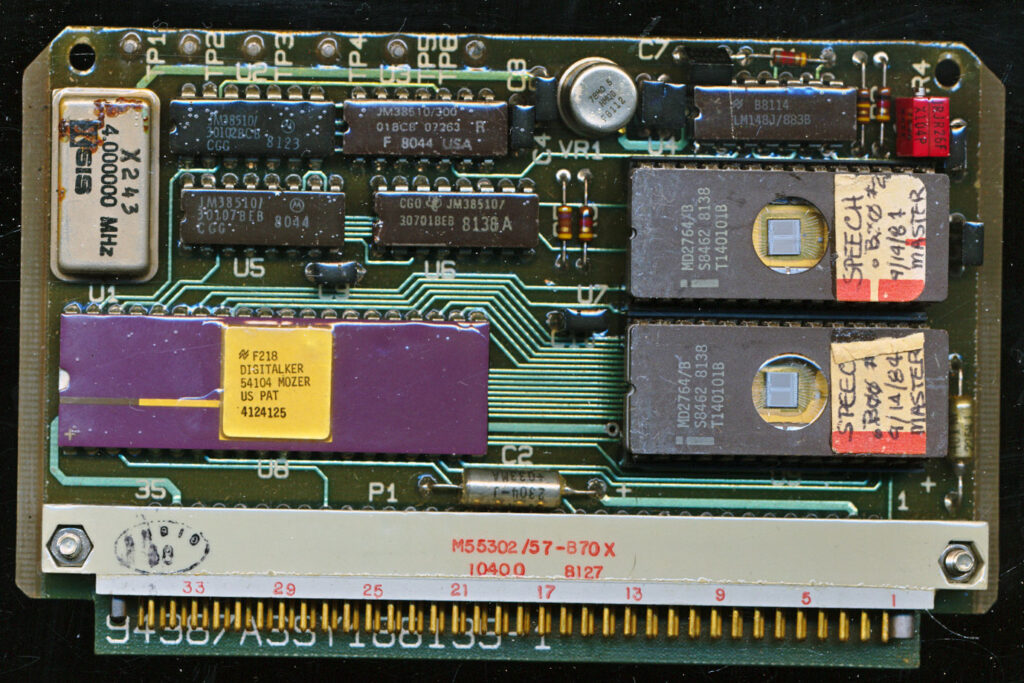
Cubic 188135-1 with very early National Semiconductor DIGITALKER – This is from a AN/ASQ-T20 P4AX Training Pod (A P4A without Altimeter support)
This is a very early DIGITALKER chip, note the patent number on it: 4124125, which is a misprint, it should be 4214125 (the other one is for a heat exchanger), which appears on later examples of the DIGITALKER. Using compressed voice samples int he two MD2764 EPROMs on the board the DIGITALKER synthesizes a voice, which is often called ‘Bitchin’ Betty.’ This voice can warn the pilot of various things such as missile locks, targeting, or in some cases, what maneuvers to perform to not become nose art on your enemies plane. The pod has its own as it is simulating warning that would come if there was in fact an actual missile launch. The pod can receive telemetry from the ground, and other pods that a simulated missile launch has occurred, and provides the needed inputs to simulate what happens.
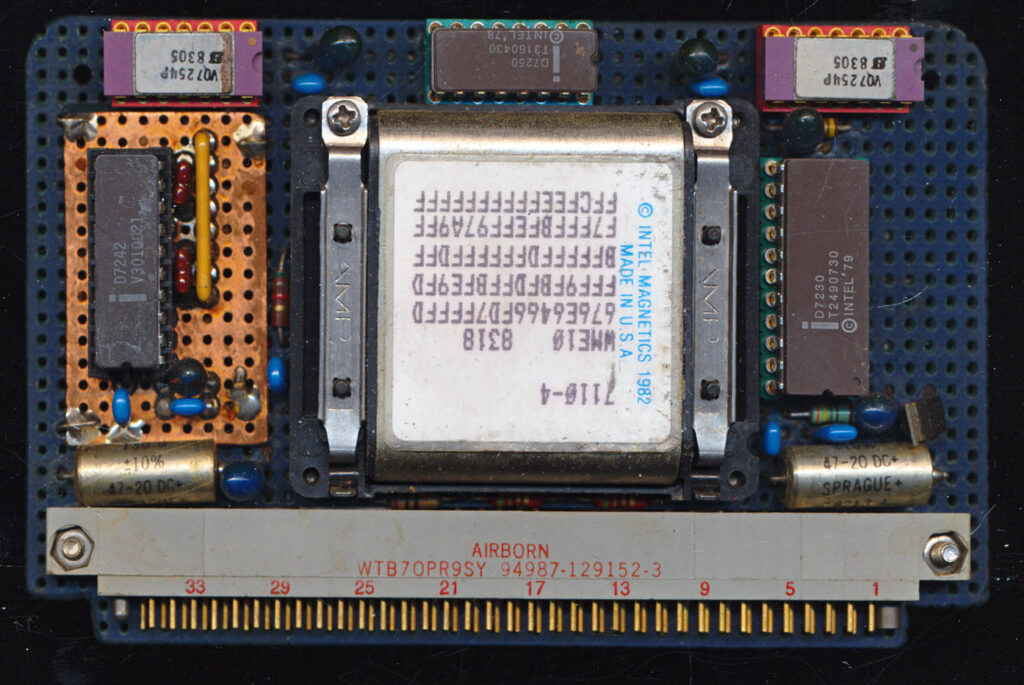
Cubic P4 Pod Memory – 1 Mbit in a Intel 7110-4 module. This is a very early prototype of the board, hand made and hand wired.
The pods also record the likelihood of the missile attack being successful or not, useful for scoring the mock dogfighting. This and other data was stored on 1 Mbit Intel 7110-4 Bubble memory modules, These were the hot new thing in the late 1970’s, providing a fairly fast form of nonvolatile memory. Today FLASH memory does the same ting, in s much more easy to use format.
All of this is powered by the lowly 80C86 processor. These P4A pods were all retired in 2006-2010 and replaced by much more advanced P5 instrumentation pods. The P5 has longer range (both air to air and air to ground) much better encryption support (always a bummer when your dogfight gets hacked) as well as live monitoring (no more having to download all the data after the fact). Perhaps someday I’ll find some boards from a P5…..give it 40 years or so.


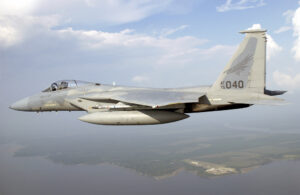
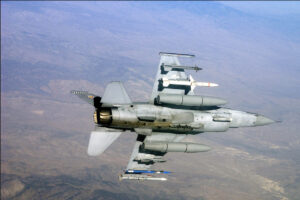
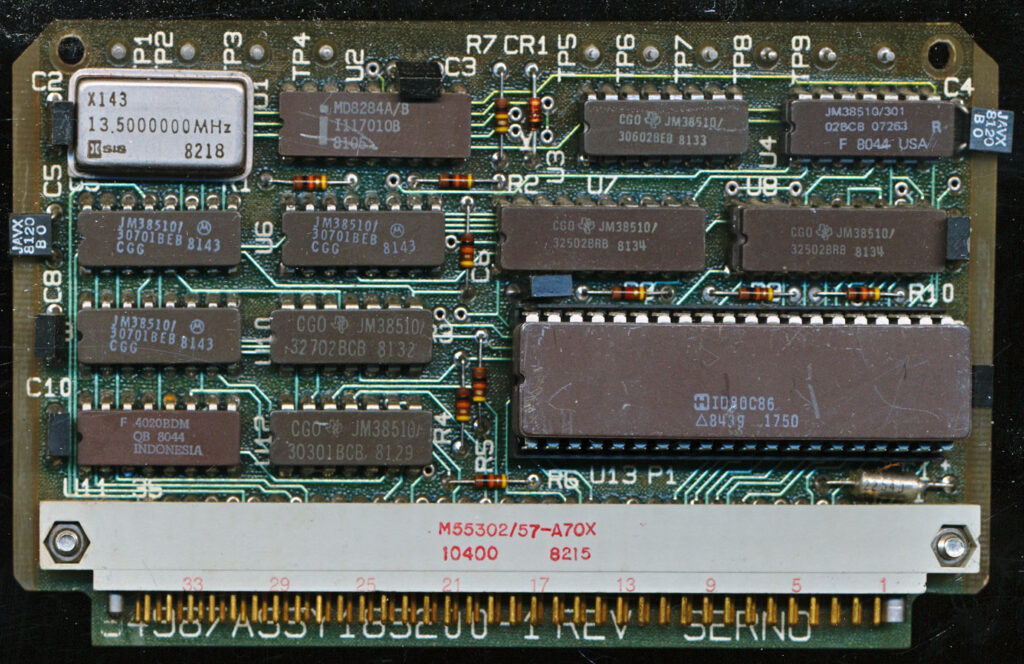
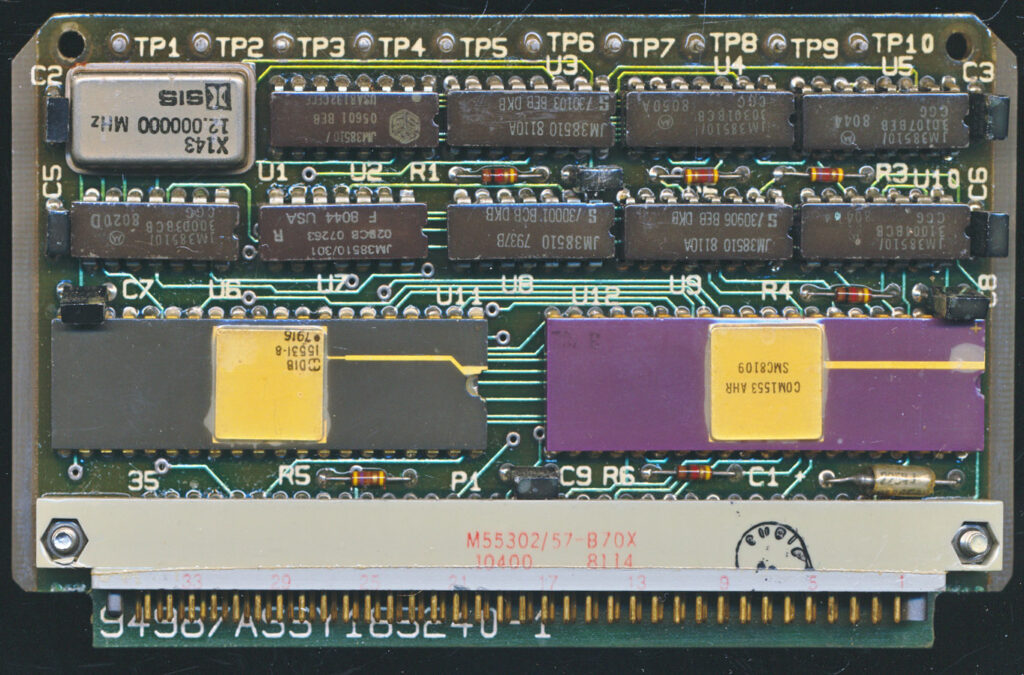
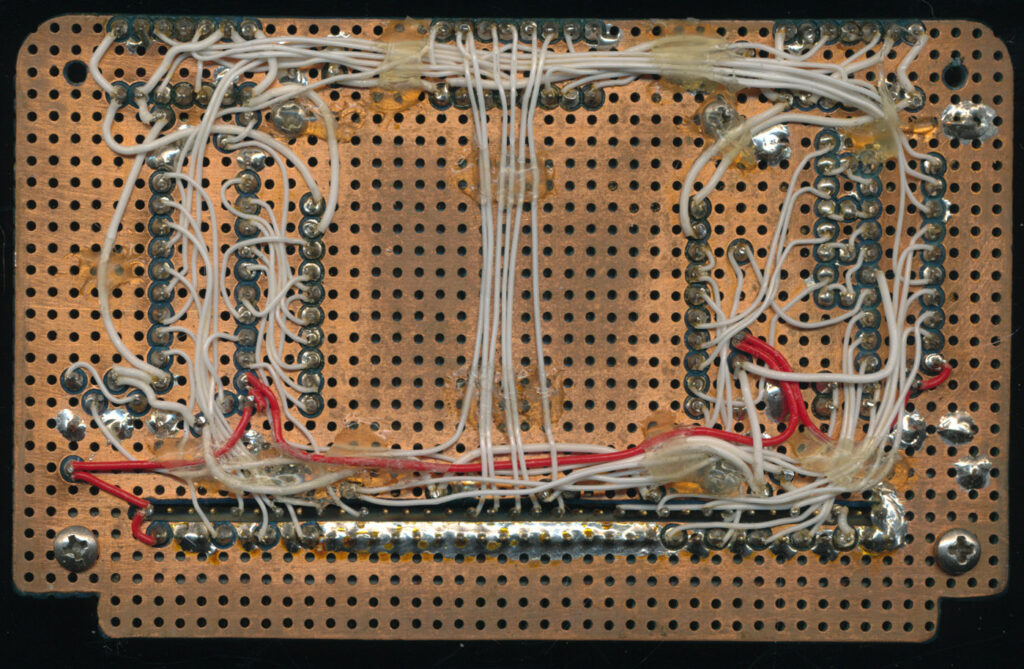
December 28th, 2020 at 4:03 am
We are intested at some re furbrished parts Like
80C186, 80486, CY7C251-45WC 300pcs